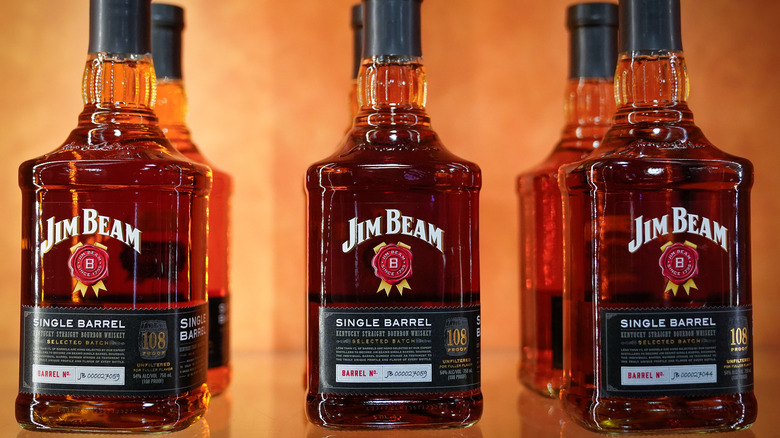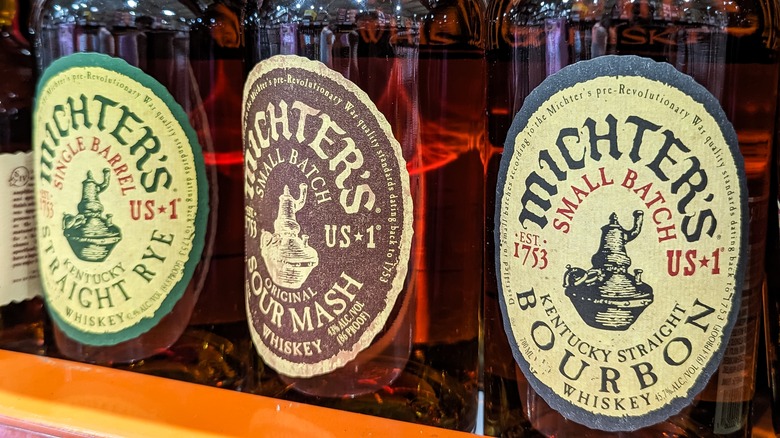What A Bourbon's Label Can Tell You About Its Quality
You can't judge a book by its cover, and yet the consumer market asks us to do just that every day. A well-made label will accurately convey the quality and characteristics of the bourbon inside, but you have to know what you're looking at for any real benefit. To help us decipher the bourbon label code, we reached out to Chris Blatner, Executive Bourbon Steward and creator of the Instagram account @urbanbourbonist.
Blatner's method was pretty straightforward. He recommended looking at two specific things. In his words, "Check the age statement and distillery." The age statement will tell you how long the bourbon was allowed to mature in the barrel. Keep in mind that the number listed on the bottle refers to the youngest bourbon included. If it's a blend of different barrels and one barrel is six years old and another barrel is eight years old, the label will state that the bourbon was aged six years.
"Bourbons aged at least four years are generally a safe bet," Blatner continued. "And well-known distilleries like Jim Beam, Wild Turkey, or Old Forester are usually reliable indicators of quality." A good distillery with a reputation for quality bourbon is definitely a safer bet than trying something entirely new from a distillery you've never heard of, but the adventurous drinker knows no fear of novelty. And vice versa, Buffalo Trace has an excellent reputation but that doesn't mean you should settle for its Old Charter 8.
A bourbon label can tell you a lot
Chris Blatner's advice for looking at the age statement and the distillery is a great place to start. Although there is a trend in the whiskey industry to start selling young or even unaged whiskey, it doesn't appear to be catching on. For that bold caramel flavor you're looking for, patience and time are necessary.
But if you're not a novice and you're still struggling to find good bourbons that you enjoy, there are other things you can look for. There are a lot of different types of bourbon on the market and not every kind is going to appeal to every person. If your problem is that you don't know what you like, you should probably start there. Lucky for you this is a fun excuse to start exploring what's available. Just make sure you're keeping track of what you're trying and what you liked or didn't like about it, or the experiment won't be as effective.
Another thing you can look for are supplemental bourbon terms which denote a specific type of distilling. For example, if you see a bottle that's labeled full proof, barrel proof, or cask strength and you don't know the difference, it's helpful to do a little research. Sometimes terms like small batch or handcrafted are used improperly which can lead to unsatisfied expectations, but when they're used in the right way they're quite helpful.

